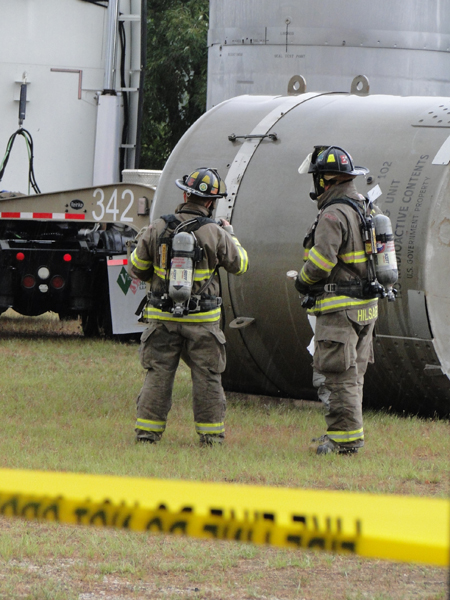Radiological Information for Professionals
The US Department of Energy has assured that radiological training has been made available to the emergency response and medical personnel of Colorado since 1986. While this training focuses on routine radiological transportation and fixed facility response issues, course participants have interests in the intentional and malicious use of radioactive materials. As well, course participants routinely express an interest in acquiring additional information that goes into further detail and that can be translated into agency response guidelines and procedures. These web links are provided to address some of these additional topics of interest.
Emergency Response Personnel and Planners
TEPP Planning Tools and Procedures (DOE)
This Department of Energy site provides standardized tools to assist planners and responders in preparing for an incident involving radiological materials and wastes. Of particular note are:
- First Responder Initial Response Procedure
- Hazardous Materials Incident Response Procedure
- Handling and Packaging a Potentially Radiologically Contaminated Patient
- Radioactive Material or Multiple Hazardous Materials Decontamination
- Model Annex for Preparedness and Response to Radiological Transportation Incidents
- Model Recovery Procedure for Response to a Radiological Transportation Incident
Stay Time Tables, Exposure Rates, Dose Guidelines (CDPHE)
This information was developed by the Colorado Department of Public Health and Environment Radioactive Materials Unit for use by emergency response personnel. It discusses planning considerations and provides links to various tables.
Calculate Your Radiation DosE (EPA)
Find out how your environment influences your exposure to radiation.
Radiation Emergency Preparedness and Response (CDC)
This Centers for Disease website has been refocused to patient management and provides guidelines/recommendations/links to a broad variety of topics.
Topics addressed include medical management, decontamination, patient management as well as information for specialized audiences including the media and communications professionals.
Public Health and Environment
Radiation Hazard Scale (CDC) --NEW!
CDC has developed a new tool for public health officials to communicate with the public in a radiation emergency. The Radiation Hazard Scale helps people better understand their risk for health effects from the emergency, and can encourage people to follow recommended protective actions in order to reduce their risk.
This is the primary entry point into the elaborate website that the CDC has developed to address topics of interest to the public and environmental health officials including guidance prepared for the public.
Topics important to environmental health officials include Protective Action Guides, waste management, and emergency response.
Clinicians and Hospitals
Information for Clinicians (CDC)
The topical areas of this website have been expanded to include Patient Management, Guidelines & Recommendations, Training, and the Tool Kit. For health care providers, it serves as the one of the most well rounded and up-to-date locations for resources and fact sheets in areas such as radiological terrorism, acute radiation syndrome, cutaneous radiation injury, and mass casualty information.
Radiation Event Medical Management - Guidance on Diagnosis and Treatment for Health Care Providers (HHS)
This site provides guidance for health care providers, primarily physicians, about clinical diagnosis and treatment during mass casualty radiological/nuclear events. Types of emergencies covered include:
- Radiological Dispersal Devices (dirty bombs)
- Nuclear Explosions: Weapons, Improvised Nuclear Devices
- Nuclear Reactor Accidents
- Radiological/Nuclear Transportation Accidents
Medical Examiners/Coroners/Crime Scene Investigators
Guidelines for Handling Decedents Contaminated with Radioactive Materials (CDC)
This document provides radiological response guidelines that suggest ways for medical examiners, coroners, and funeral directors to deal with loose surface contamination, internal contamination, or shrapnel on or in decedents' bodies.
Model Procedure for Medical Examiner/Coroner on the Handling of a Body/Human Remains That are Potentially Radiologically Contaminated (DOE)
This purpose of this document is to identify precautions and to provide guidance in the handling or contaminated descendents.
Radiation Event Management (HHS)
This document serves as the third definitive document made available by the federal government in best practices in handling decedents who had been exposed by radiation but have no contamination, field morgue procedures, autopsies, funeral home guidelines, burial, and shipment of remains.
Return to main Colorado WIPP Program page.
Return to main Nuclear Materials Transportation Oversight page.
